“No! Where did it go!?” I muttered to myself as I combed in frustration the rows of graves at St. Mary’s of the Rock cemetery in Franklin County, Indiana. The delicate headstone of one of my immigrant ancestors, Maria Adelheid Sturwold Laker, had vanished.
I’d taken pictures of the marker years earlier — Oct. 4, 2005 to be exact — when I happened upon it by accident. Having snapped off at the base long ago, the stone had sunken into the ground and was slowly being swallowed by Kentucky bluegrass.
At the time, I had been unsure if Maria was buried there as I was just starting out with genealogy. I had only recently learned that she and her husband had come to America with their sons in 1847. Up until that point I’d only ever heard about her sons Meinard, Henry, George and William.
As I was searching the cemetery, it was only by a stroke of luck that I happened to look down and notice a patch of smooth gray stone beneath the turf. The opening was about as big as a tennis ball. I didn’t know if it was simply a rock or something more.
I knelt down and began to pull away the sod, gently brushing off the soil. My heart began to pound as I revealed the Laker name. Could this be her? And then a date … and an age! It was her! My 4th great-grandmother.
I felt as though I were looking into the very face of my immigrant ancestor.
I later marveled to my parents that her headstone surely would have been completely enveloped by the next spring, and perhaps it would have been lost forever. I made it a point right then that any time I visited St. Mary’s, I would tend to her grave. I felt a need to make sure the immense sacrifice she had made by leaving everything she’d ever known for a chance at something better would not be forgotten.
And now it was missing.
Cemetery map
In the summer of 2008 I had visited the cemetery again in search of more Laker graves. While there I met a groundskeeper and asked if the church had a plot map. She said that indeed it did in what she described as a large and very old piece of cardboard that was folded a couple of times for safe storage.
She told me Sister Marjorie should be in the rectory next to the church, and she might let me look at it. But when I knocked no one answered. The groundskeeper said she would try to find out for me.
A few weeks later she mailed a map she had made showing the rows and plot numbers of all of the Laker plots she could find.
Maria Adelheide Laker was listed in row NR2, plot number 16. I knew by her inclusion of Maria’s middle name Adelheide that she had to have consulted a church-owned cemetery plot map because she would not have known it from looking at the marker.
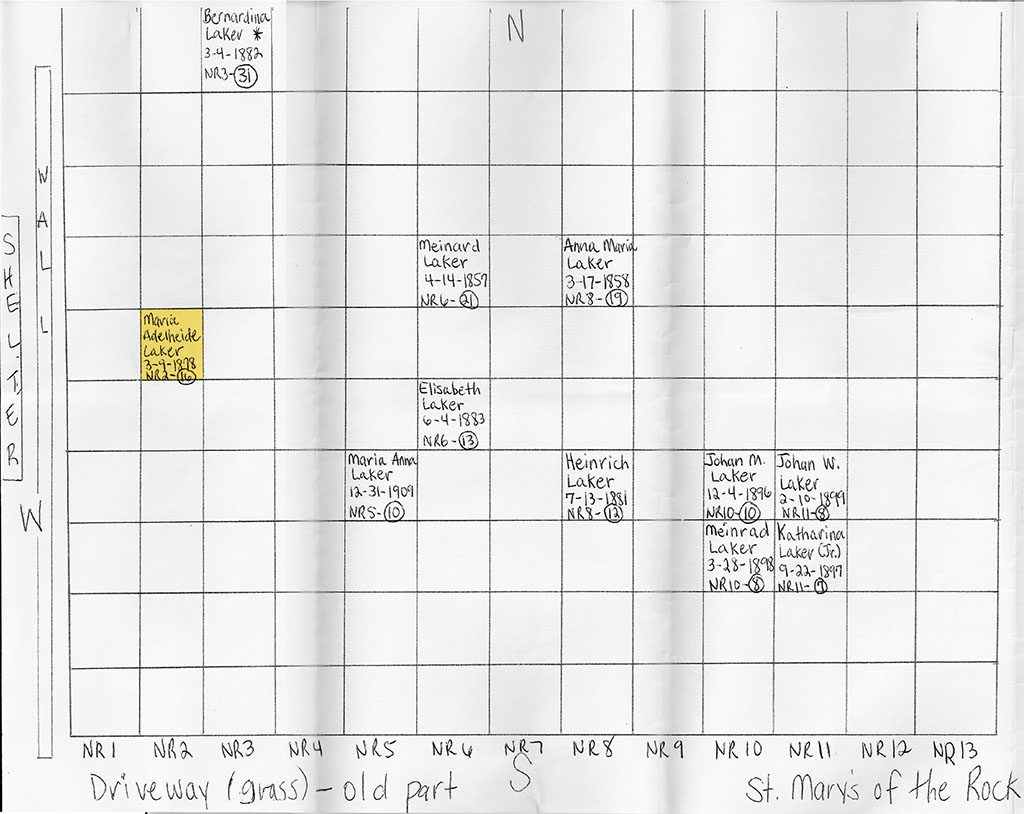
She included a note explaining the numbering to me:
Andrew,
Here is the cemetery plot marked w/ the Lakers. I marked each person in the row and put the number they are in that row, i.e., 13.
The * means there was no tombstone as a marker.
Because of space, I kinda combined the squares, i.e., 1-3, 4-6, etc., unless they were next to each other, then they are as marked.
Vanished
It had been a few years since I’d visited St. Mary’s. The diocese had since closed the church in December 2013 and folded its congregation into Holy Family Parish in the nearby town of Oldenburg, but the community continued to hold its annual turkey supper to fund the church’s preservation society. That’s what brought me there on October 9, 2016.
After Dad and I ate, I decided to go check on Maria’s grave. Much to my concern, the first thing I saw was that a new grave had been dug in the oldest part of the cemetery. I gasped.
Dad told me the deceased had lost control of his classic Ford Mustang on St. Mary’s Road a few months earlier in a terrible accident. Not wearing a seatbelt, he was ejected when the vehicle rolled into a field. He was pronounced dead at the scene. Just horrible.
Maybe I was wrong to be alarmed by the sight of a new grave in the old north section (and I certainly can’t blame the deceased or his family). But knowing what I did about how Maria’s headstone was nearly lost before, I questioned whether the absence of markers in that area really meant no one was buried there.
I was gripped by the possibility the plot map had been misplaced after the church’s closing. I tried to push that out of my mind. I was drawing conclusions without facts. Stop it, Andrew.
A backhoe had likely been used to dig the hole of the new grave, and judging by the wheel ruts it left behind it looked as though the ground had been very wet at the time.
I walked directly to where I thought Maria’s grave was, but I couldn’t find her marker. My memory of its location was a bit fuzzy. Where was it? I took a few equally fuzzy pictures of the general area with my phone and thought I would cross-reference those with my other photos. I later realized I had been standing right next to where it once was.
As I began writing this, I couldn’t believe it had already been five years since that happened. I got sidetracked with life, always meaning to go back and find her headstone. Okay, I got really sidetracked. In my defense, a lot has happened in my life between now and then.
My hope was that the marker was just buried and not gone forever. Was 2016 just the start of the church burying people in the old section of the cemetery?
Dear God, what if they’ve already buried someone on top of her!?
No, you’re doing it again. Stop that.
Last known whereabouts
Maybe I was wrong. Maybe the headstone had disappeared before the appearance of the new grave nearby. I couldn’t find any other photos from the cemetery in my archive, but I did recall seeing a photo of Maria Laker’s headstone on Ancestry.com.
The user who had posted it did not source the image, so I assumed she had either taken it herself or had found it elsewhere. I decided to take a peek at Findagrave.com, the world’s largest online gravesite collection.
Bingo.
The photo of Maria Laker’s headstone had been uploaded by Greensburg-based genealogist Greg Meyer. I downloaded the original file to see if the image had retained its IPTC metadata.
Luckily, the website had not scrubbed this data. Assuming the date was set correctly on Greg’s camera, he used his Canon PowerShot A560 to take the photo on August 1, 2015, less than a year before the fateful auto accident.
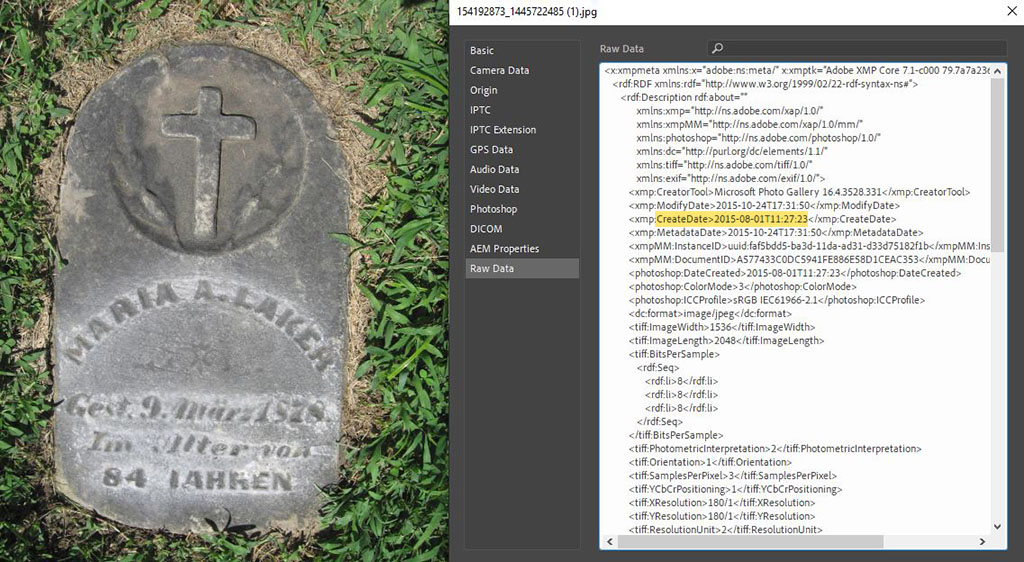
That still doesn’t prove that it hadn’t gone missing somewhere in between, but at least this information provided a clue as to when it might have last been seen.
GPS tagging
When I was writing a book about my family, I had a thought to include Latitude and Longitude coordinates for each marker of the Laker immigrants. Ultimately I wasn’t pleased with the accuracy of my phone’s GPS readings, so I scrapped the idea.
I had actually pushed that so far out of my mind that I didn’t even remember doing it until I began digging through my photo archives for this story. Thankfully I am a digital pack rat.
I didn’t know if the coordinates would be of any help in relocating the marker, but I thought I’d try it anyway.
I opened Google Earth and punched in the latitude and longitude. What I saw confirmed my suspicions about having inaccurate readings.
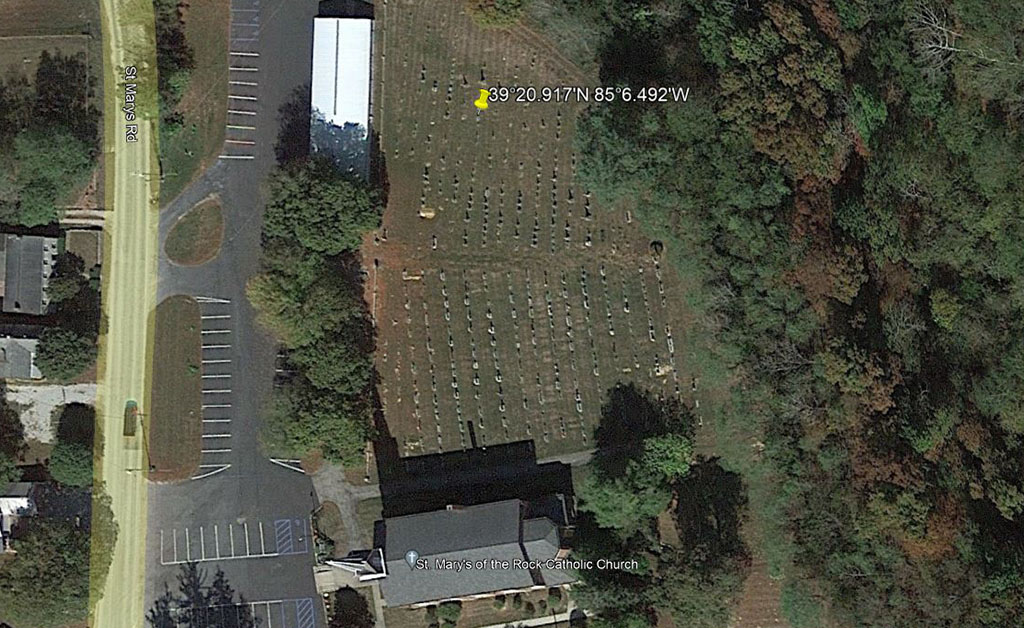
While the pin did locate the cemetery, it was off on the location of Maria Laker’s grave by about four rows to the east and half a dozen or so plots north. This wasn’t going to be of any help. Dang.
BUT, the satellite image was dated 2019, and I felt as though there might be a tiny speck that could be Maria’s headstone. Maybe someone else had already fixed the problem.
Immersive panorama to the rescue
I kept searching my files and found something even better. On a sunny December day in 2012, I had paid a visit to the original Henry Laker farmhouse in St. Mary’s because I had learned (much to my surprise) that it was still standing. I was really big into shooting 360-degree “virtual tours” at the time, and after shooting the farm I went to the nearby cemetery to check on Maria’s grave.
I don’t remember shooting a 360-degree photo of her grave, but that’s typical of me. I had never done anything with the photos, unsure of what I would ever do with such a thing. I suppose I thought it might help me relocate the headstone should it ever get covered by grass again.
I couldn’t have predicted back then that it might actually help me find the grave that was now entirely covered and possibly mashed farther beneath the surface by a tractor tire.
I fired up my panorama stitching software and was surprised I still knew how to use it. I found another program that helped generate an immersive 360-degree view, and the result is what you see at the top of this page.
Rotating the image and dragging it up and down, it is clear to see exactly where the marker was located.
I called Dad and asked if he wanted to go dig up a grave with me.
Grave diggers
“Should I bring the shovels?” Dad asked. He clearly called my bluff when I tried to have a little fun with him.
He remembered our turkey dinner from five years earlier and recalled that I had been concerned about a missing marker. Then, as our conversations usually do, the topic drifted to something else. This time it was giant pork tenderloins the size of a child’s blanket. But that’s another story.
Our “dig” was set for Saturday, October 16, 2021. We were going to rescue Maria’s final resting place.
When Saturday morning arrived, I picked up Dad at his home in Enochsburg. We made the roughly 20-minute drive through the Franklin County countryside to St. Mary’s.
I parked the car, set my phone to record video and prepared for the worst as I walked towards the old section of the cemetery with Dad trailing behind me.
It didn’t take long to find it — to my surprise, the headstone was no longer covered.
Well, that was anticlimactic.
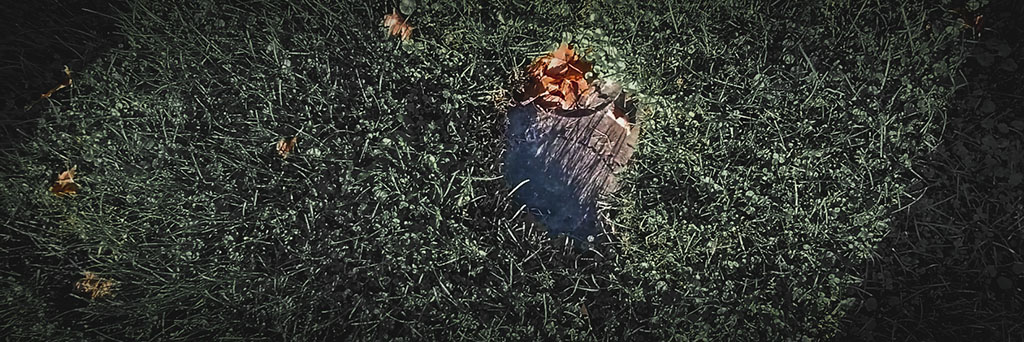
It appears Maria Laker may have another caretaker out there who had noticed the same thing I had. Her stone had already been rescued, and all that was left was to give the site a little maintenance.
Dad knelt down and pulled away the grass and “Creeping Jenny” as he called it, just as I had done more than 15 years earlier. He traced his finger across the name on the stone. “Maria A. Laker,” he said aloud. He asked about the faint words inscribed below it, and I explained that they were German.
Gest. 9 Marz 1878 im Alter von 84 Jahren (Died March 9, 1878, at the age of 84 years).
The headstone isn’t exactly in line with church records. Maria’s death is recorded in the St. Mary’s of the Rock church books and shows her date of death as March 11, 1878. It also states that her age was 85 years, but she was in fact 81 — she was born January 15, 1797, in the small German village of Sturwold (which was also her maiden name).
But that’s close enough.

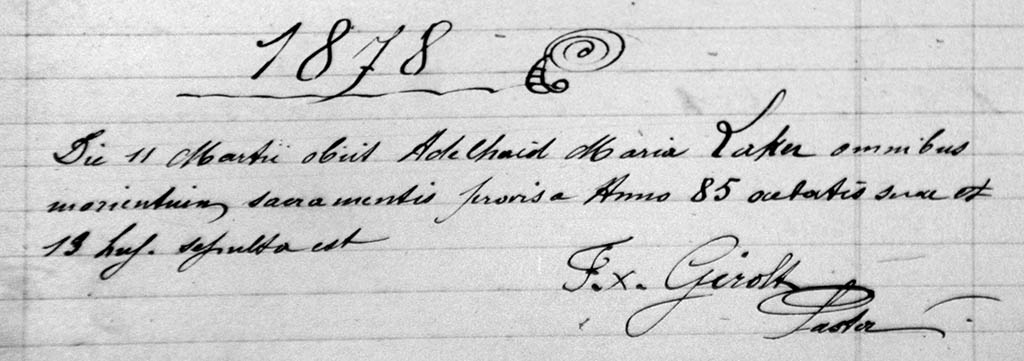
We continued clearing away the dirt and grass around the marker and took a measurement of the distance from the closest headstone to the north. The tape measure read 44 inches between them, and we made note that the center of Maria A. Laker’s marker was roughly 49½” from the nearest stone.
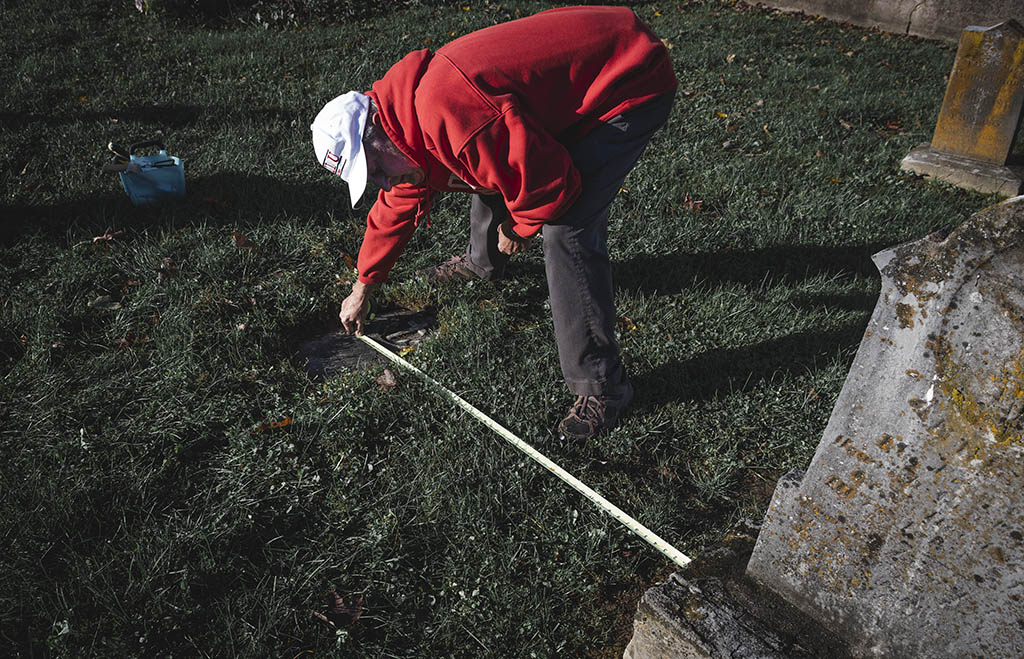
Confident that Maria A. Laker’s resting place was once again secure, we headed to Oldenburg for lunch at the Brau Haus. Digging up one’s ancestors can work up an appetite, of course. I commemorated the outing with a German beer. Prost!
Rest in peace, Maria. I’ll check on you again someday.
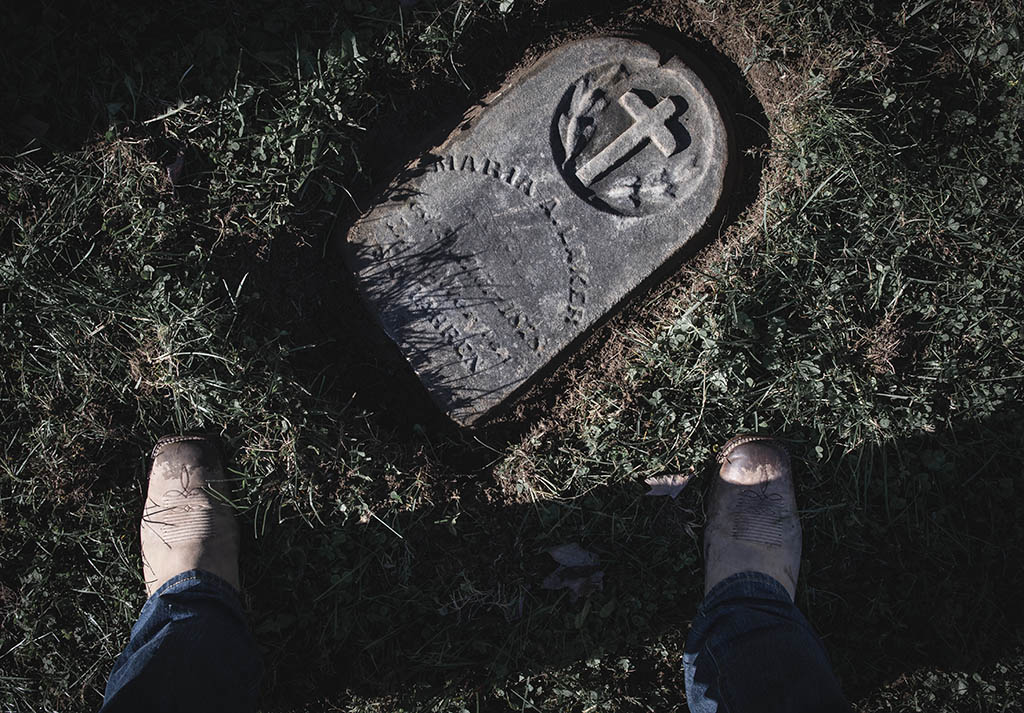
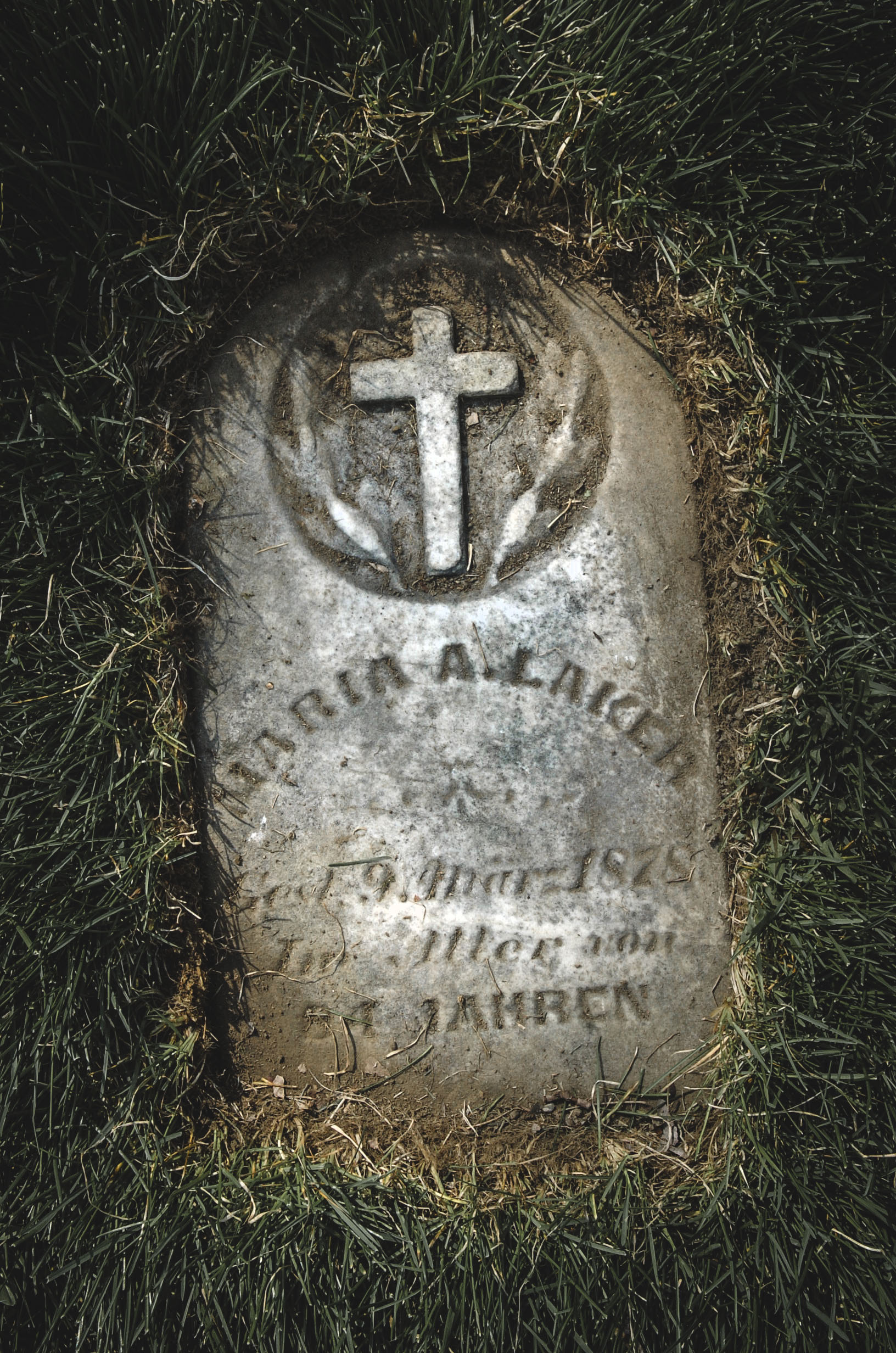
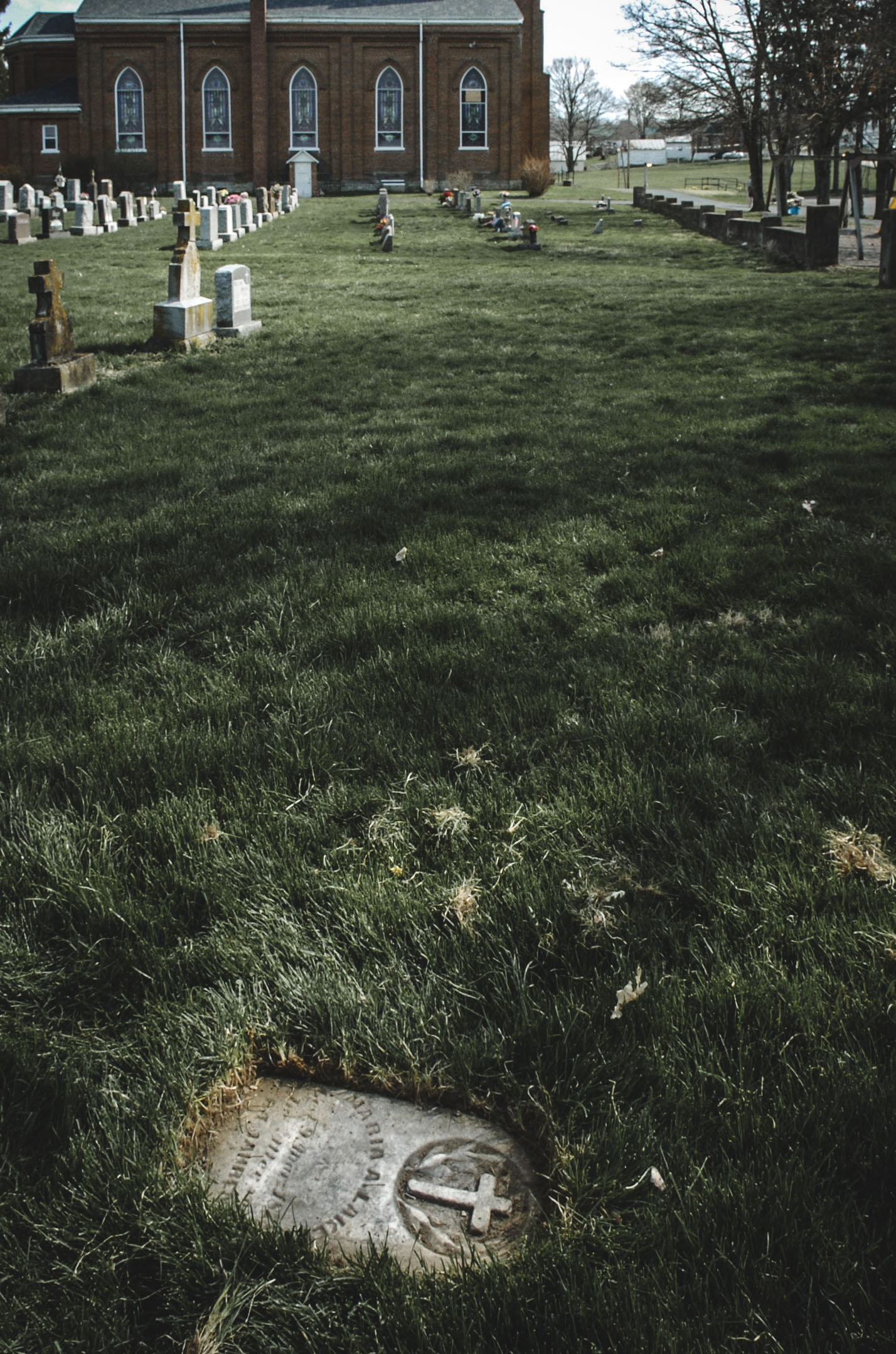
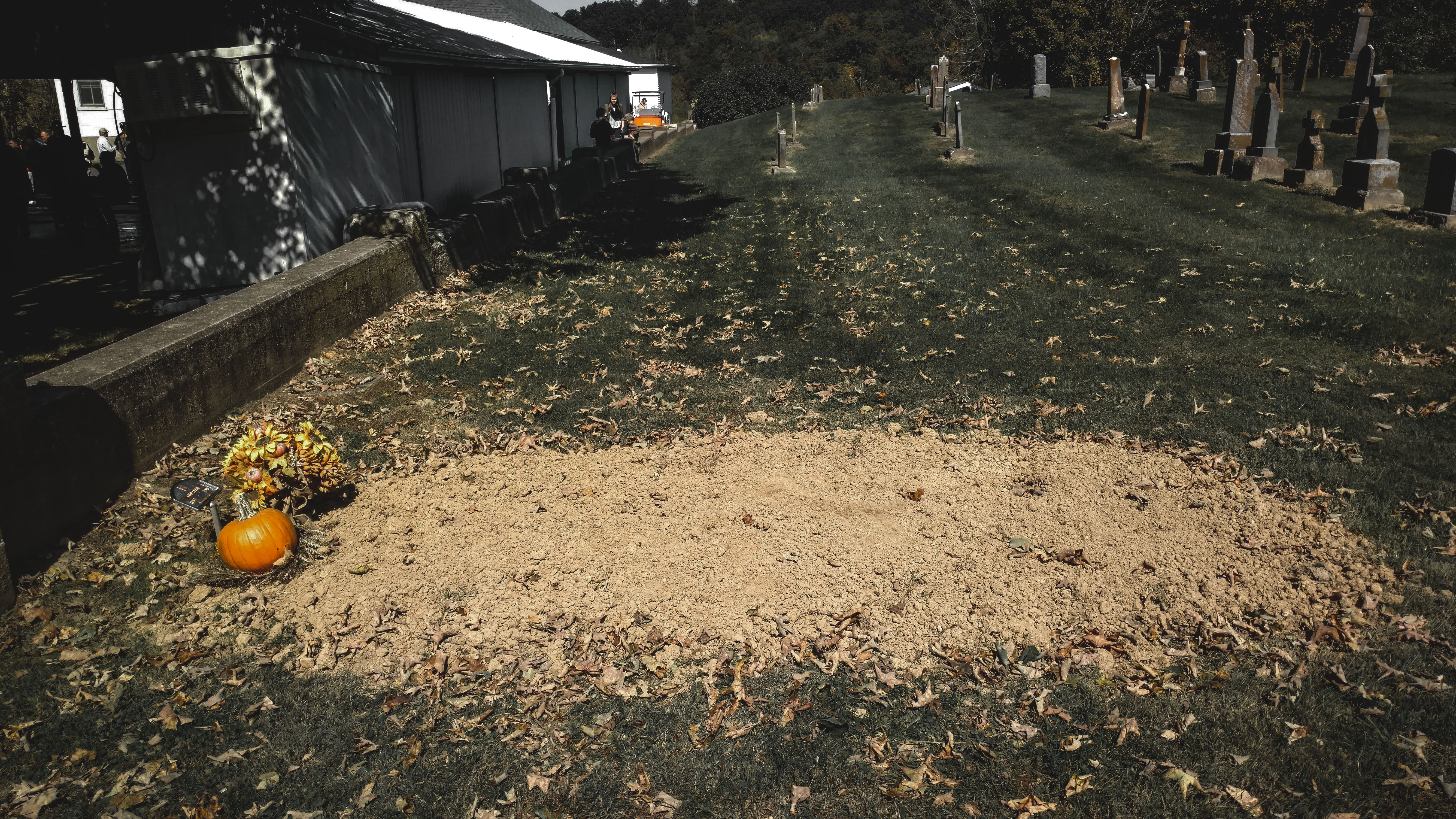
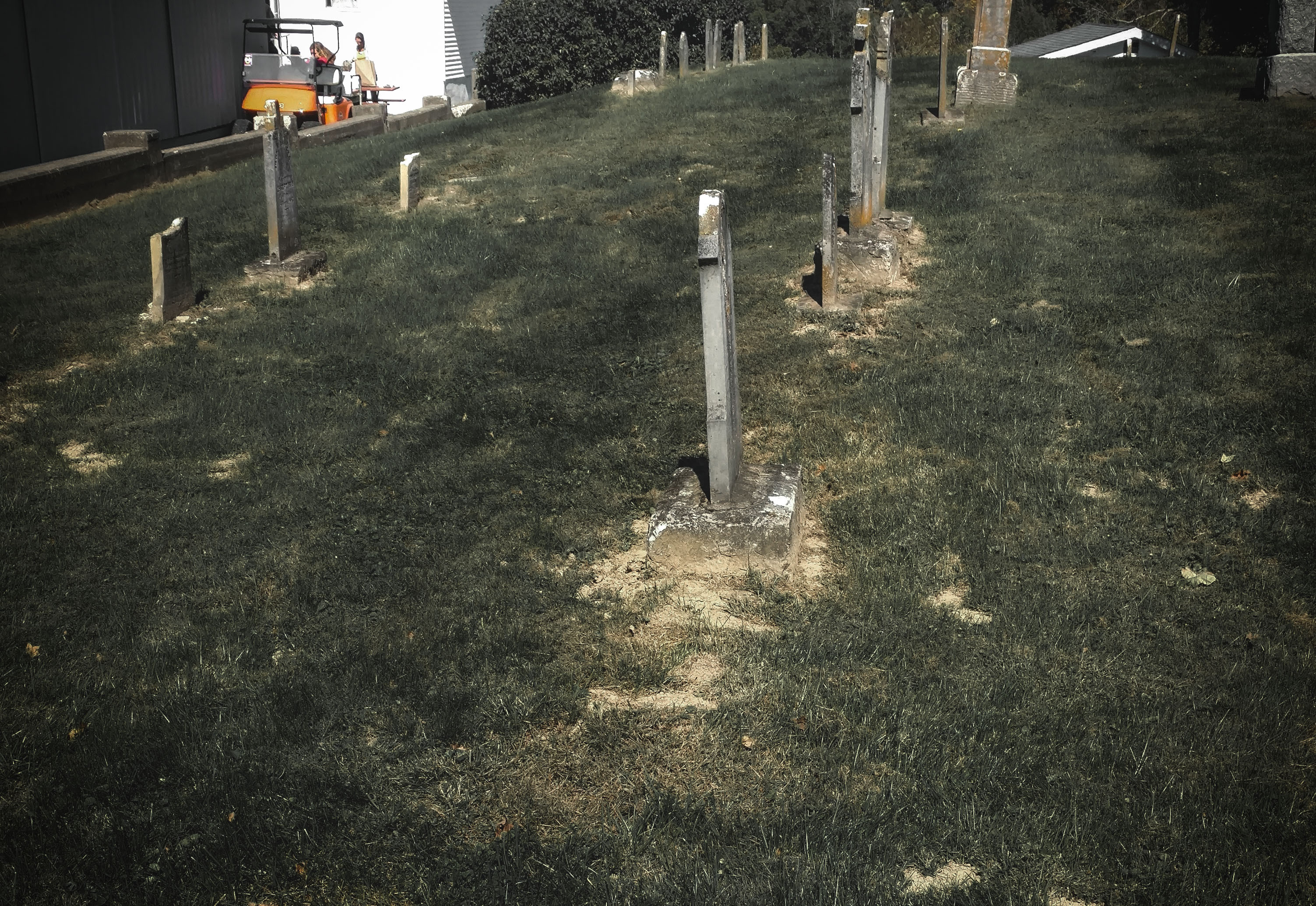
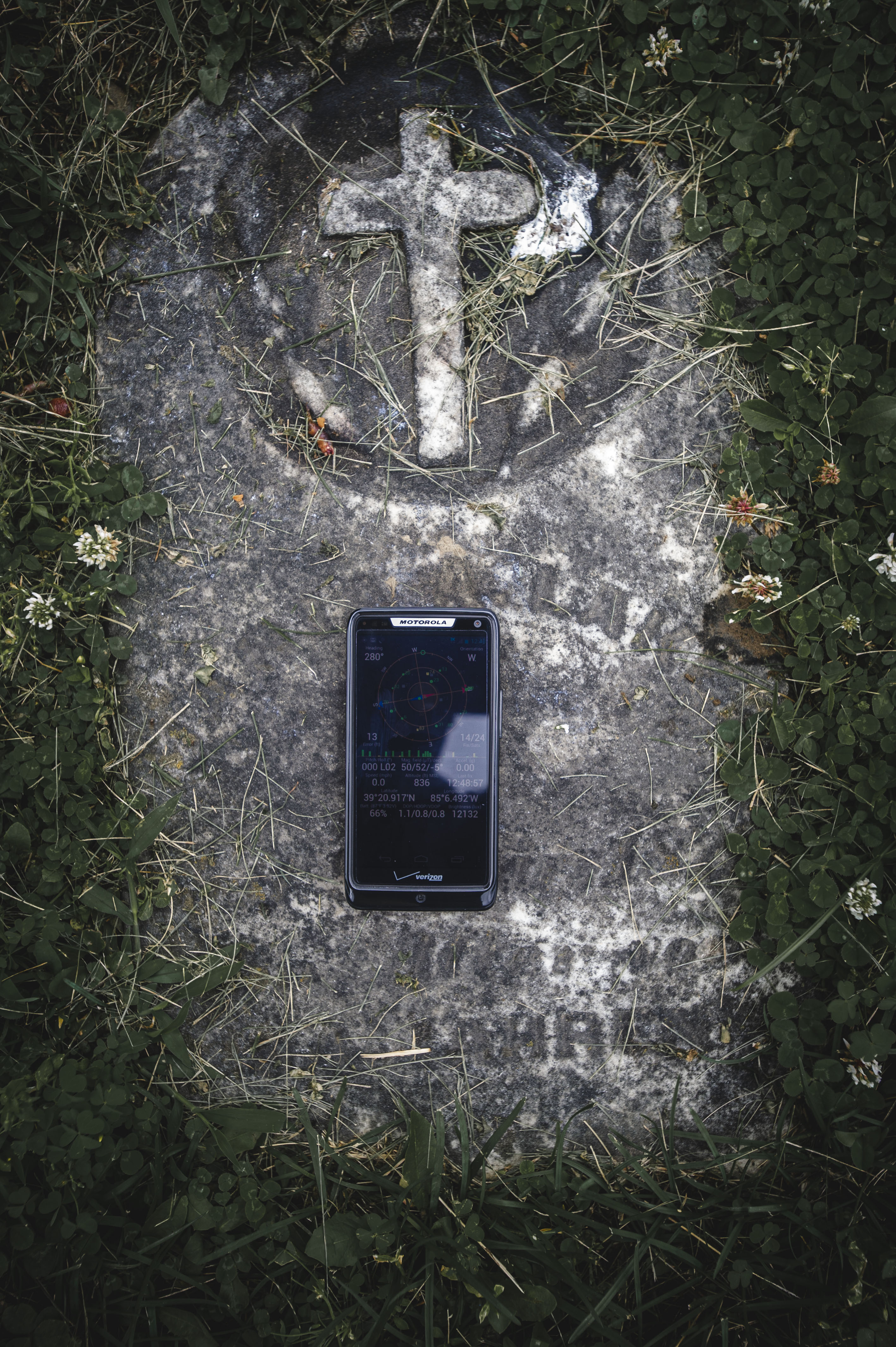
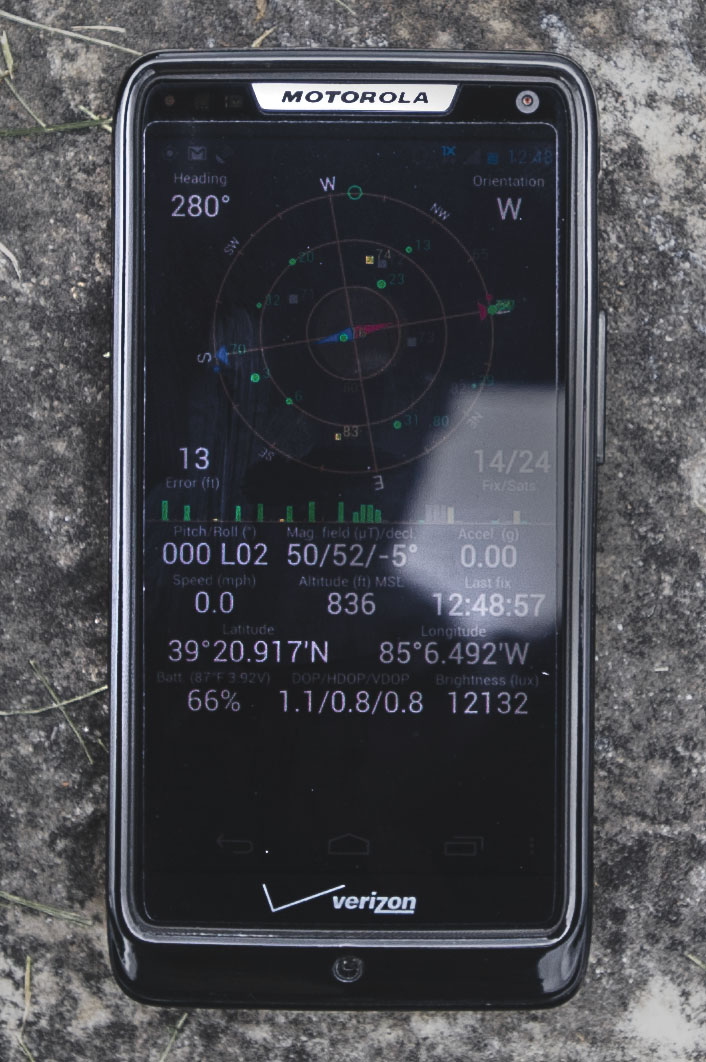
Andrew, love your stories!!!
Thanks Barbara! Hope you and yours are doing well!
Loved your story, Andrew! I will have my husband, Dan Weber, your 4th cousin read it. Thanks!
Glad you liked it Michelle! 😊
I enjoyed reading the story and it makes me want to go there and see all the other lakers there.
Thanks Bernie! They’re all out there, although it’s sometimes challenging to find the ones in the old section. The map the groundskeeper sent is really helpful. Maria’s husband Meinard as well as their four sons and their wives are all buried in St. Mary’s. Let me know if you go – I might join you if I’m able!